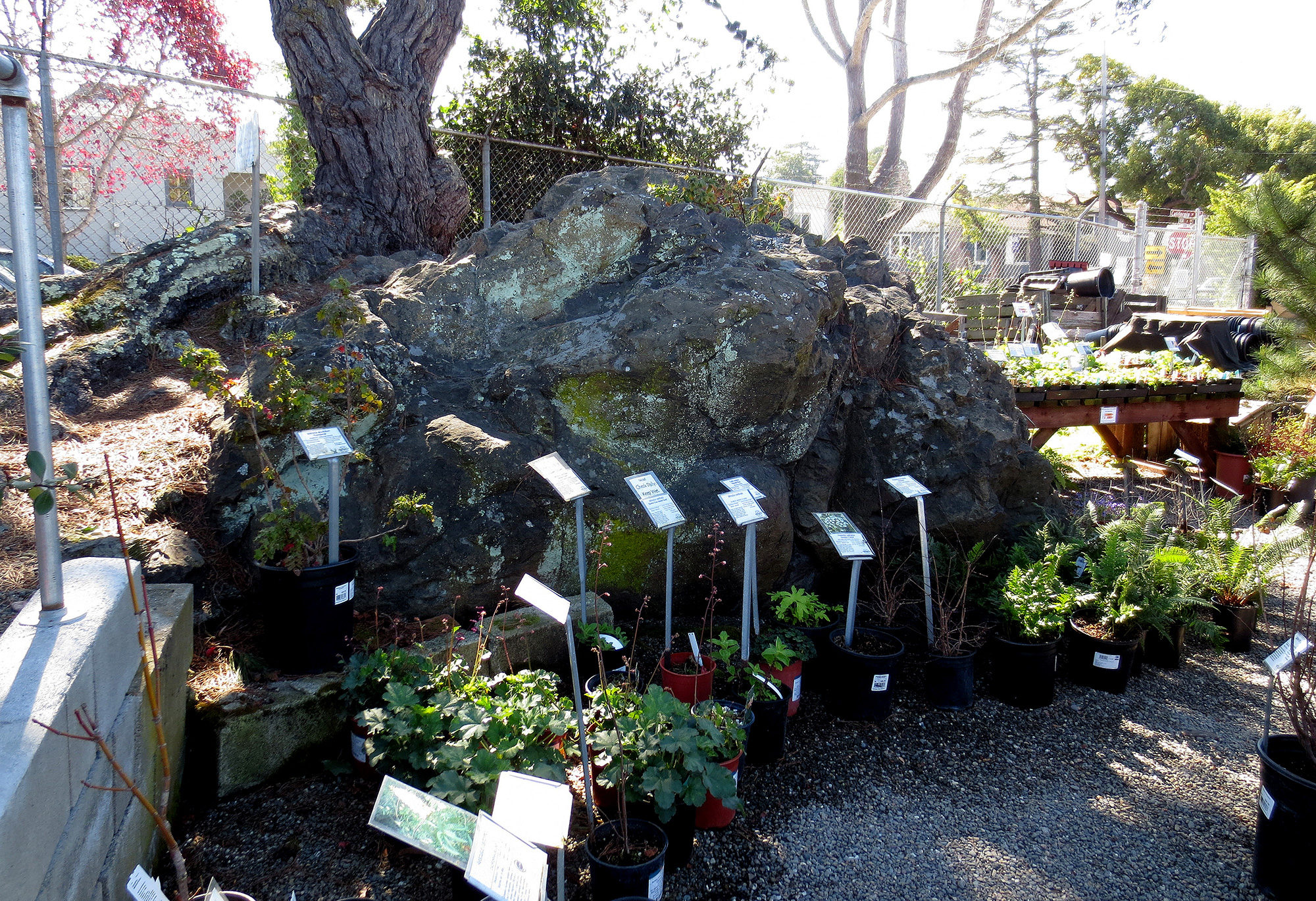Children visiting the nursery sometimes discover an interesting spot that many adults miss, namely the large red rock that anchors the southwest corner of the nursery. It sits under a 25 foot Monterey pine that has wrapped parts of the rock with thick, barky roots. The pine sprouted in the 1930s but the rock’s been here even longer, perhaps as long as 200 million years. Those of us who work at the nursery pass by the rock at least a dozen times a day, stopping sometimes to picnic at its base, but mostly ignoring this ancient heap of what geologists call Franciscan sandstone. It’s basically a small piece of the ocean floor that moved up onto land during the Mesozoic era. Coastal prairie grasses and wildflowers grew around it for millennia, but about 200 years ago, cattle, crops and European grasses took over the neighborhood. In 1922, when George Budgen bought land for his nursery, the rock was surrounded by pasture, and if you stood on top of the rock you could throw a stone and hit tracks of the old Key system trunk line.
Waves of horticultural fashion have lapped at the base of the rock since the nursery opened in 1922. Fuchsias, Hollywood junipers, Vireya rhododendrons, hydrangeas, perennials, camellias, etc. Today, the sunny side of the rock is a backdrop for many varieties of sun shrubs, and its shady side is a stage for of California native shade plants, such as Huckleberry, Salal, Wild Ginger, and Yerba Buena, the minty groundcover which gave its name to that big rock in the Bay. On your next visit to the nursery, take a stroll back to see the rock. While not as thrilling as a trip to the big red rock called Mars, this one is easy to walk to, it’s surrounded by beautiful living plants and animals, and there’s fresh water nearby.



